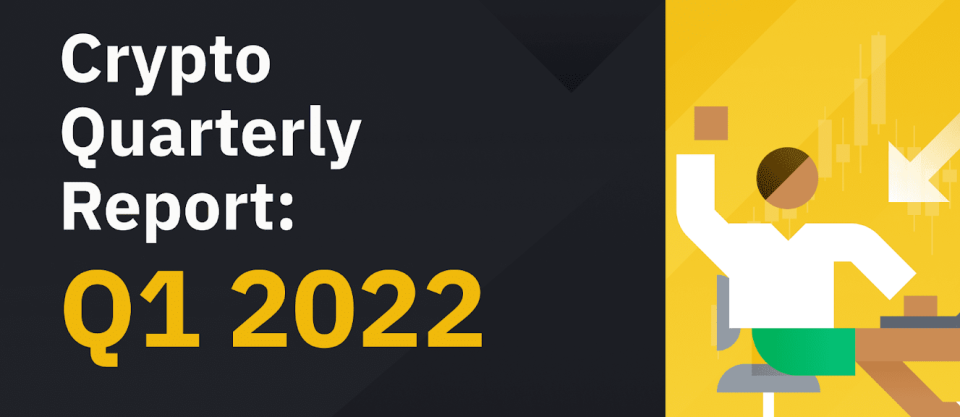The start of May this year saw the crypto market tumble significantly, losing $200 billion in value in only a few days. As a result, traders’ positive sentiment for the market (measured in the Bitcoin Fear and Green Index) took a dive too. One related fact was that the Nasdaq index was in the middle of its most enduring succession of losses since 2012. As Michael Novogratz of Galaxy Digital Holdings explained, “Crypto probably trades correlated to the Nasdaq until we hit a new equilibrium”. In fact, when, on May 10th, the Nasdaq 100 went on a rally, Bitcoin did the same, gaining 5.4%. Still, Bitcoin was lighter by half since its November peak of $69,000 and had not proven itself as attractive a safe haven as gold in the aftermath of the Ukraine invasion. If you’re involved in CFD crypto trading, keep reading to get the latest on four of the biggest digital currencies this year so far.
Bitcoin
On the weekend before Russia invaded Ukraine, when tensions were high, Bitcoin slumped below $40,000, indicating that traders did not view it as a safe haven. Gold, on the other hand, had not been worth as much since June last year. When the second half of March was underway, Bitcoin was holding at $40,700 after making some gains, but “For Bitcoin to break out, a tech rally and macro risk-on sentiment are the key ingredients”, said Wilfred Daye of Securitize Capital. Michael Novogratz added that, as long as interest rates were increasing, Bitcoin may stay in the window between $30,000 and $50,000.
On April 28th, Bitcoin’s rise of 3.2% coincided with the 4% rally of the Nasdaq 100. “This week’s tech earnings have been playing a factor in the daily movement of Bitcoin’s price”, explained Jason Lou of Okcoin. The crypto crash of early May, which took Bitcoin back down to mid-2021 levels, had a lot to do with tightened Fed monetary policy, and particularly their sharpest rate hike in several years, which drew traders away from speculative assets.
Ether
The Nasdaq rally of May 10th also succeeded in benefiting Ether, the native coin of the Ethereum blockchain, which gained 6.4%. The same thing was true of the surge in the index twelve days earlier, when Ether gained 3.4% and topped the $3,000 mark. However, the crypto dip at the start of May brought Ether down together with Solana, Cardano, Avalanche, and XRP (which lost 5.2% on the 8th of the month). Sentiment was so low that Tammy Da Costa of DailyFX commented, “The future of individual coins or tokens remains dubious”.
Ethereum’s upgrade to a proof-of-stake blockchain, which would make transactions less power-intensive, cheaper, and quicker, was scheduled for June, but chief developer Tim Beiko tweeted on April 11th that there would be a delay, sparking enough disappointment to send Ether down by 9.5%. In the eyes of some, like Brendan Playford of Masa Finance, it was “Still uncertain whether [Ethereum] can actually deliver on its promise of lowering costs and increasing transaction speeds”.
Dogecoin and Cardano
Bitcoin of America ATMs welcomed Dogecoin into their locations around the USA near the end of March, sparking a 14% rally for the altcoin, which gained as much as 20% in that week and ended up worth 13.6 cents. Compared with the 73 cents it was worth last May, it was still down a hefty 80%. Gov Capital was optimistic, predicting it would reach 22 cents by the end of 2022.
Then, at the end of April, the coin got another boost when Dogecoin enthusiast Elon Musk purchased Twitter, soaring by 30% to settle on 17 cents. In January, Musk indicated Tesla would accept Dogecoin as payment, and “The possibility, even if it is remote, [it] is enough to get traders excited about the potential to gain in DOGE adoption”, said Noelle Acheson of Genesis Global Trading. The other recent case of a crypto price responding to Musk’s statements was in May last year, when the CEO changed his mind and decided Bitcoin payments would not be accepted at Tesla, sending the crypto into a dive.
In mid-April, when Fed hawkishness had swept away risk appetite in the markets, Cardano dropped by a considerable 11%, as compared with Bitcoin’s slump of 7.7%. “Historically, altcoins have a tendency to overperform Bitcoin to the downside in strong bearish trading environments”, explained Josh Olszewicz of Valkyrie. The reason, he said, had to do with the “less longer-term conviction” of altcoin traders. Cardano also slid down with other cryptos at the start May, touching its lowest since January.
Wrapping Up
If you’ll be engaged in CFD Bitcoin trading in coming weeks, watch interest rate news in the US. Looking ahead, Marcus Sotirou of GlobalBlock says, “for 2022, I can’t expect an aggressive uptick in prices, because of the macro conditions”, but, needless to say, there are contrary opinions too. Also, follow the live rates and recent performance charts of your chosen crypto trading instruments so you’ll be able to make more informed, up to the minute trading decisions.


